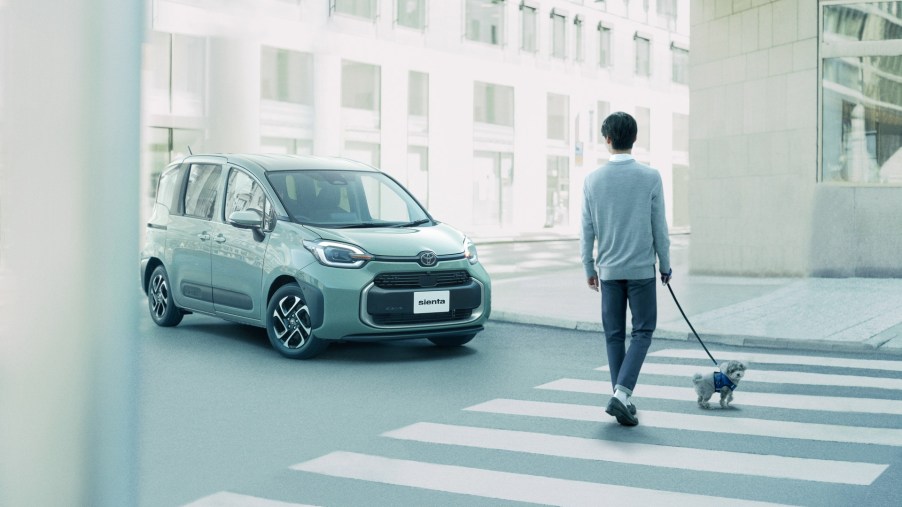
The Sienta minivan is another one of those small cars Toyota makes that we won’t be seeing here anytime soon. But we wish we would. However, the TNGA-B platform-based Sienta is one of those small on the outside, big on the inside minivans. This is a three-row van and is quite a bit different than its predecessor, which you probably also haven’t seen.
This week Toyota unveiled the Sienta. It features a hybrid drivetrain with one or two electric motors combined with a 1.5-liter Dynamic Force gas engine. There is also a version with the 1.5-liter engine only. It also comes with two-wheel or all-wheel drive. The engine spins a 10-speed CVT Direct Shift automatic transmission. Toyota’s Sport Sequential Shiftmatic system simulated shifts.
When did the Sienta minivan first appear?

The first-gen Sienta debuted in 2003. It stayed in production until 2015 when the second-gen version arrived. This new version shares the same TNGA-B platform as the Yaris, Yaris Cross, and Aqua, but with a wheelbase of 108.26 inches.
The new design offers almost identical front and back crisp oblong wheel openings that tie into black plastic pads. A wide black plastic door ding protector visually ties into the plastic wheel openings. Also visually, the unique wheel opening details draw your eyes to the fact that the van seems slightly underwheeled and under tired. The alloy wheels are 15-inches.
Does the Toyota Sienta have special features?

Sienta minivan’s side windows dip down low into the body, which helps to lighten the rather boxy overall design. In the rear, the tailgate starts very low, to aid with disabled ingress and egress. Then the lower bumper cover swings down. It incorporates a ramp, especially suited for wheelchair access.

The unusually-shaped rear window is ringed with taillights on either side. Extending out between the rear window and taillights is a plastic graphic detail that also ties into the backup lights. And the rearward most side window has an interesting kickup that ties into the rear as well.
In the front, square-ish headlights are bisected by a plastic band going from side to side. The two grille openings below are interrupted by a large black plastic pad. Both the front and rear overhangs are actually rather short, which is a good thing visually.
What about inside?

Inside, a floating 10.2-inch touchscreen dominates the dash. Digital instruments are an option. The seat backs have insets for smartphones, a nice touch. USB ports and cup holders abound, and a flat floor from front to back adds to the sense of spaciousness.

Above the headliner, Toyota has added an air circulator system. This helps to distribute the air conditioning better throughout the van. And the seats feature a deodorizing fabric that is also water and oil-repellent. Safety features include the Toyota Auto Sense ADAS suite featuring advanced park, semi-autonomous driving, and front and rear cameras that can retain imagery.

Right now, only Japan will get the Sienta. The base price is $14,193, with the top-of-the-line Sienta listed for $22,620. This is another reason why we’d like a U.S. spec version, they’re very inexpensive for what they offer. But don’t hold your breath.



